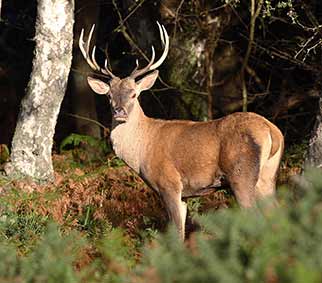Deer field signs betray presence - an introduction

Those who enjoy walking in the New Forest will find that the ability to recognise which animals have passed along the way can be almost as satisfying as seeing the creatures themselves.
Certainly it brings with it a huge sense of privilege, a feeling of being allowed to peer into a largely secret world that mostly goes unseen.
In the New Forest, signs of deer abound in virtually all the woodlands and on many of the heathlands.
And of course, if signs of deer are present, there’s a good chance that the animals will not be far away, providing the careful observer with opportunities to approach unseen these often elusive creatures.
Field signs are many, but perhaps the most commonplace are slots, or deer hoof-prints left behind in soft ground, betraying exactly where the animals have passed. Look out also, though, for droppings, deer pathways, 'creeps' below fences, hair snagged on branches and wire fences, rutting scrapes and stands and even roe 'rings'.
New Forest deer field signs - find out lots more
New Forest deer - find out lots more
References:
The History of British Mammals: Derek Yalden
Roe Deer: John K. Fawcett, British Deer Society
New Forest Roe Deer: John K. Fawcett
Deer Watch: Richard Prior
Mammals of Britain and Europe: David McDonald, Priscilla Barret
Field Guide to British Deer: F J Taylor Page
More links
Other related links
Search this site

Sadly, 58 animals were killed - 35 ponies, 13 cows, 8 donkeys and 2 sheep, whilst a further 32 were injured - 3 pigs, 9 donkeys, 11 cows and 9 ponies.
(Forty-three accidents occurred in daylight, 15 at twilight and 101 in the dark. Twenty-seven accidents were not reported by the driver involved).
Here's just one horrific example - Three donkeys killed in collision with van at notorious New Forest blackspot (Advertiser and Times)

